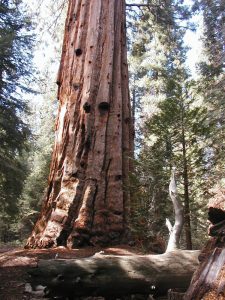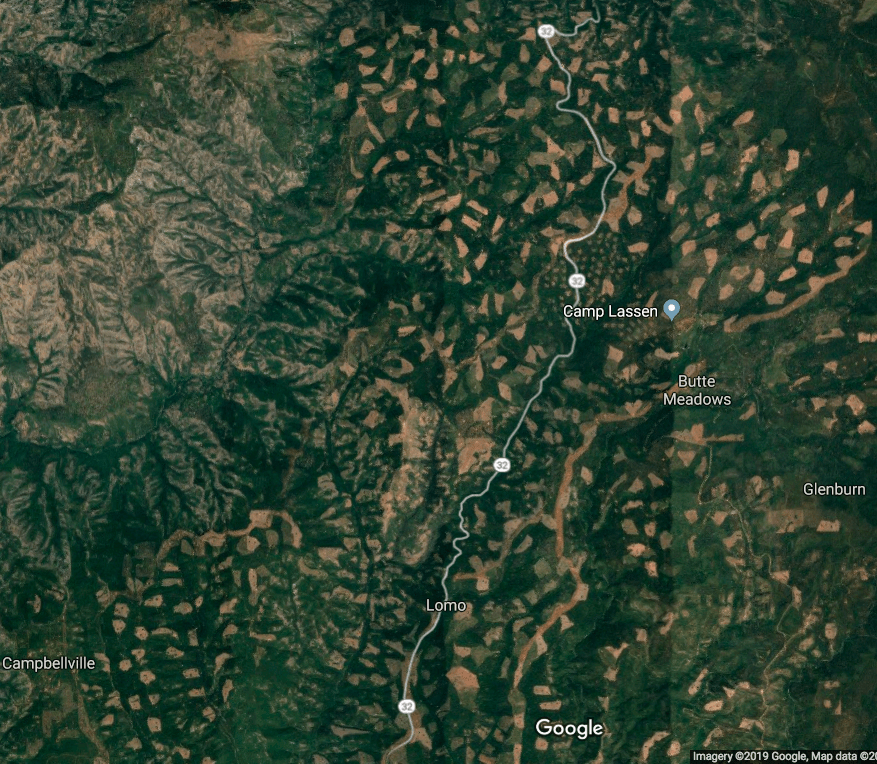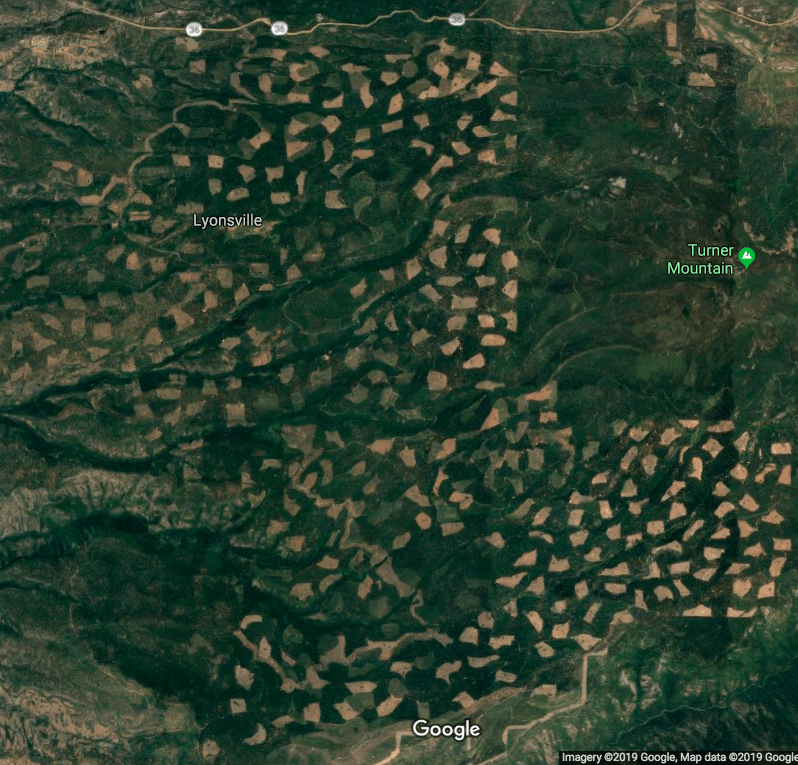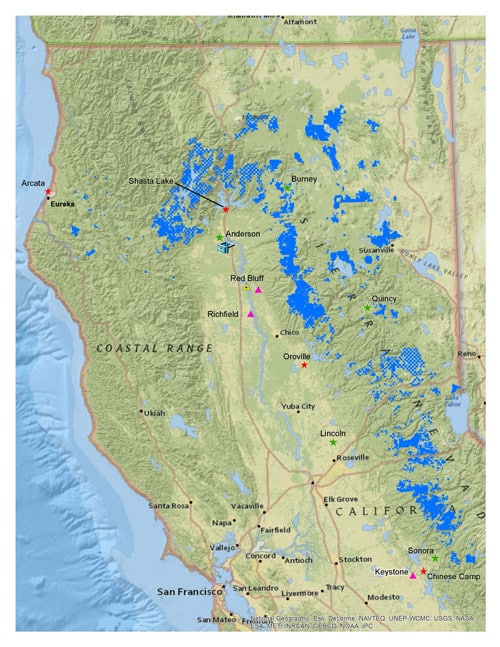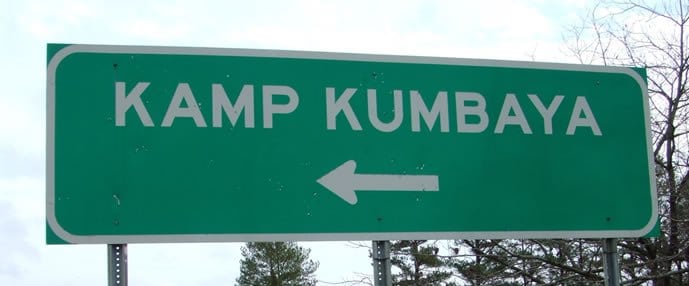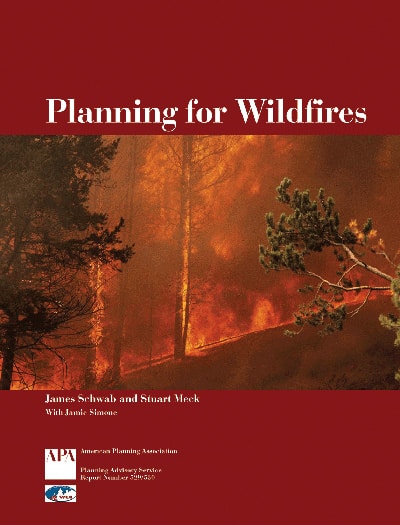I have seen a trend in postings from the Sierra Club, on their Facebook page. Online petitions have been popular with eco-groups but, those petitions really don’t do anything. They seem to be a way of riling up their followers, gathering personal information, and receiving donations. There is also a sizable amount of people commenting who do not side with the Sierra Club.
The particular posting I will be presenting regards the Giant Sequoia National Monument, and how the Trump Administration would affect it. The Sierra Club implies (and their public believes) that Trump would cut down the Giant Sequoia National Monument, without immediate action. With over 500 comments, there are ample examples of what people are thinking.
“So much of the redwoods and Giant Sequoias have already been cut down… the lumber trucks involved had signs which read ” Trees… America’s renewable resource”… and just exactly how to you “renew” a 2 thousand year old tree??? When a job becomes even remotely scarce, one must find a new occupation. Having cut down the redwoods,(RIP Pacific Lumber and the “Redwood Highway”) and when they’ve cut down the national forests (public lands), are “they” going to insist on the right to come onto my land and cut down my trees as well… to provide jobs for the lumber industry? The National forests and Monuments are public lands, and no one has the right to turn them over to private interests for money making purposes. When are they going to see that there is a higher calling here? The forests provide for much of the fresh air we enjoy… they take in the carbon monoxide we exhale, and they exhale the oxygen so necessary to us. They each also take up 300 gallons of water, so provide for erosion control, and I could go on forever with the benefits of trees… but there will still be short sighted detractors who are only able to see the dollar signs in this issue. If providing jobs is the object… bring back our manufacturing jobs from overseas, all you big companies… your bottom line profit will be less, but you will have brought back the jobs to the USA, and you claim that is the object…???? Investing in the big companies in order to get rich does not make the investing noble or honorable when it is condoning taking jobs off-shore to enrich the few. … at the cost of the lost jobs for our people. Love your neighbor..”
I think that statement speaks for itself. Well-meaning but, misinformed.
“Give them an inch and they’ll take a mile. Keep loggers out of National Giant Sequoia Forests. Forest rangers and the National Parks already do controlled burning when needed to protect forest ecosystem health. The idea that commerical logging companies can be trusted with that task is preposterous.”
I wonder if he had noticed all those dead trees inside the Monument. Another example of not knowing who is taking care of the Monument.
“No such thing as controlled logging look at the clear cut coast. Once you let them in they will take it all and say Oops. A long time ago Pacific lumber clear cut thousands of acres illegally and Department of forestry did nothing. Things have not changed.”
Yes, things have changed. Logging IS controlled in Sierra Nevada National Forests… for the last 26 years.
“Destroying over 200k acres of sequoias and leaving ONLY 90k acres is NOT “CONTROLLED LOGGING “. OUR planet needs trees to produce oxygen and just how long do you think those jobs will last?”
Someone thinks there is a HUGE chunk of pristine pure Giant Sequoia groves. Thinning forests is not destruction, folks.
“I went to sign this and put my address and what not but then I skipped over my phone number and it won’t let me sign it! Unless you give your phone number it’s not going to San. I will not give out my phone number. Is there another way to sign for this?”
There were many comments like this one.
“They are both classified under same genisus of Sequoia, It’s their enviroment that makes them different. The Redwood trees (Sequoia sempervirens) along N Cal coastline and then the Sequoias trees (Sequoiadendron giganteum) found in the Sierra Nevadas mountain regions are the same yet very different trees because of the chactoristics. Both trees share their unique and acceptional height and massive girth size, they share the same red wood tones.”
Someone thinks they are an authority in tree Taxonomy.
“As someone who works in timber, don’t blame it on us! Many foresters care about sustainable forestry. I hate Donald Trump just as much as anyone who cares about the environment”
Well, that is sure saying something, eh?
“The forests are being burned down by all these un-natural wild fires that are created by the powers that be to carry out agenda 21/30. It’s not a secret but most people don’t want to see it & the common mentality is if we don’t see it, or address it, it will go away. Right?”
There’s more and more loonies out there saying this stuff, and blaming “Directed Energy Weapons” for starting all the wildfires.
“There will be no more forest in America, it will be a big cacino and golf courses.”
And there’s other conspiracy theories out there, too!
“The most deushiest thing ever! Poor Trees “
People do believe that Trump would clearcut the Giant Sequoias.
“Oh yes look what tree hungers did to Oregon”
I love a well-mispelled insult!
“No More RAPE AND MURDER OF OUR TREES”
I wonder what real violent crime victims think of this comparison. Should we let those trees be horribly burned alive, or eaten by insects, resulting in a long and slow starvation death? *smirk*
“Wth…. He truely is satin”
Soooo smoooooth!
“Drop big rocks on their heads. Something like Ewoks from Return of the Jedi all those years ago. Ewoks were “original” monkey wrenchers.”
That’s a lovely solution! Violence will fix everything!
“I think you could stand to be a bit less adversarial in your comments. Oil has nothing to do with this subject and devalues your argument. There is no reason why the land cannot be managed without giving it away to unregulated for-profit companies. That is the right answer.”
Yep, there just might be oil underneath those giant trees. Yep, gotta cut em all down to make sure! Misguided but, kinda, sorta, on the right path.
“The devil could burn it all down there because most of the state is so ungodly. Trump isn’t your problem. Godlessness and son keeps your minds and state in a state of anarchy. Poor people. I will keep praying you will find out that you all need to pray to the living God.”
Yep, because…. ummm, …. God recognizes where California’s boundaries are???!!??
“Try direct energy weapons”
Certainly, the Reptilians and Nibiru are to blame, fer sure, fer sure.
“Because of Monoculture”
Blame the old clearcuts!
“Anyone cutting a tree should be SHOT!!!!”
And another violent solution.
“The lumbar goes to China and else where, not used used in USA, great loose loose thing.the logs get shipped out of country destroys old growth forest well some one will make $$$$$ of it but it won’t be you”
Dumb, dumb!
“Its not about forest management its about trumps business buddies being allowed to buy the land and develop it”
And even another conspiracy theory. People love to say “I wouldn’t put it past him” when promoting such stuff.
This American mindset, on a world stage, is troubling. People proudly display their ignorance and stupidity to fight a non-existent issue. America doesn’t believe the truth anymore, and the Sierra Club, and others, are spreading misinformation through phony petitions.
